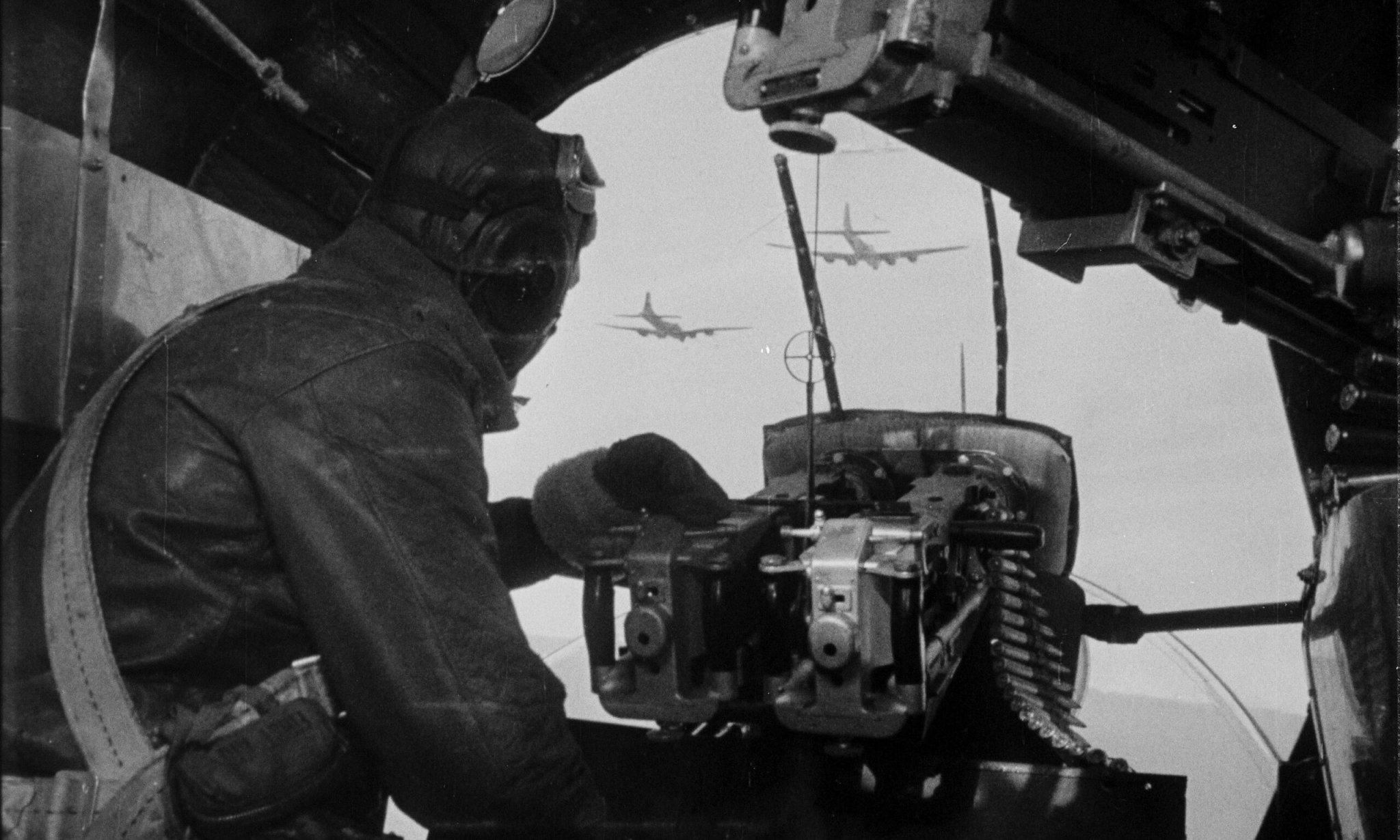

When the men of the 100th Bomb Group of the 8th Air Force arrived in England in 1943 it had 140 flying officers. Four months later, only three of that original group could still fly combat missions.
“We were going overseas to die,” John “Lucky” Luckadoo says early on in The Bloody Hundredth. It’s a striking moment at the start of the documentary, acknowledging the expected death toll before any pilot made it to the European theater.
Apple TV+’s Masters of the Air was a long-awaited project, the third World War II miniseries from producers Steven Spielberg and Tom Hanks. The nine-episode series adapts Donald L. Miller’s book of the same name. But it’s only this week, as the show wraps up, that the team behind it also released The Bloody Hundredth, the new documentary telling the story of the crews who fought in the skies over Europe. Luckadoo, a pilot with the 100th Bomb Group, is one of the surviving veterans of the unit, infamous for its high casualty rate, who shares his story in the documentary.
For those who have been watching Masters of the Air, The Bloody Hundredth doesn’t break much new ground. The documentary is essentially an hour-long summary of the miniseries, using archival footage and interviews to tell what Masters of the Air tells in nine hours. Ahead of the series premiere, writer and showrunner John Orloff had talked with Task & Purpose about the level of research he did over several years preparing Masters of the Air, including compiling a more than 200-page series bible. The stories shared by veterans in The Bloody Hundredth are a kind of testament to the level of accuracy and detail in the show. Moments mentioned in the documentary were depicted word for word in some scenes in the series. But the documentary also shows much of what was missing from the show.
More than anything, The Bloody Hundredth gives needed details to elements in Masters of the Air. In the miniseries, details like the Norden bombsight, the training air crews went through, how they formed their tight friendships and how B-17s operate are left mostly open to context clues to grasp. Here, the veterans and the historians featured give brief but useful explanations on why tools like the Norden bombsight were so important and groundbreaking. The early minutes of the documentary lay out the stakes of the air war, showing how disadvantaged the Allies were at first against the Luftwaffe. If there was a big flaw in Masters of the Air it’s that it threw audiences right into the fighting, without enough time to set up its mostly doomed characters or show just what went into being part of a bomber crew. The Bloody Hundredth provides much needed information, albeit as the miniseries ends.
Whereas Band of Brothers had interviews with then-surviving members of Easy Company accompany each episode, Masters of the Air has this. On one hand, it would be hard to do the same set up, given just how many casualties the 100th Bomb Group had and the fact that so many members were replacements who weren’t there for many of the earlier missions. But watching The Bloody Hundredth it’s hard not to wish some of these interviews had made it in ahead of each installment to supplement episodes. But as the documentary goes on, it starts to feel less like a supplementary piece but more of a recap of the 100th Bomb Group’s missions.
Subscribe to Task & Purpose Today. Get the latest military news and culture in your inbox daily.
Although much of what is told isn’t new — people watching the miniseries’ finale might get a bit of deja vu by the end of the documentary — hearing the real-life members tell the story is a fresh experience. Luckadoo was one of several 100th Bomb Group veterans who lend their stories to the documentary. Many of the real-life figures depicted in the series, such as in-series narrator Harry Crosby, get a word in. Alongside Crosby and Luckadoo, pilots such as Richard Macon and Robert “Rosie” Rosenthal provide their own insights. Much of the interview footage is old, as most of the veterans featured are dead, but the segments are compelling, with each pilot or air crewman sharing vivid memories of the war. The two central, or at least top-billed characters in the show, Gale Cleven and John Egan, are not in it, although they are often mentioned. Two of the main veterans featured in the documentary, Luckadoo and Robert Wolff, aren’t even depicted in Masters of the Air.
Those veteran interviews are supplemented with insight from several historians (including Miller) and in the one non-historian element, Spielberg himself. Hanks provides the narration, but he is mostly there for transitions, with voiceover from the veterans themselves providing much of the audio information with the documentary.
If there’s a flaw with The Bloody Hundredth it’s that it is too short. The memories the veterans share are compelling, and hearing certain details told by the people who lived them has impact. Certain elements briefly featured in Masters of the Air, such as PTSD from missions, seem to have been a bigger issue, at least as Rosenthal and Crosby tell it. If the documentary had more time for them to talk about the experience it would be stronger. Much like Masters of the Air, The Bloody Hundredth is engaging, if needing more meat to it.
The Bloody Hundredth is now streaming on Apple TV+.
The latest on Task & Purpose
- Can a veteran go to any emergency room?
- Retired Army officer may have leaked secrets to honeypot spy
- Snowmobiler who ran into Army helicopter sues for $9.5 million
- Soldier charged with selling secrets on HIMARS, F-22s, rescue helicopters and nuclear missiles
- What’s the difference between field stripping and rat f–king an MRE?
